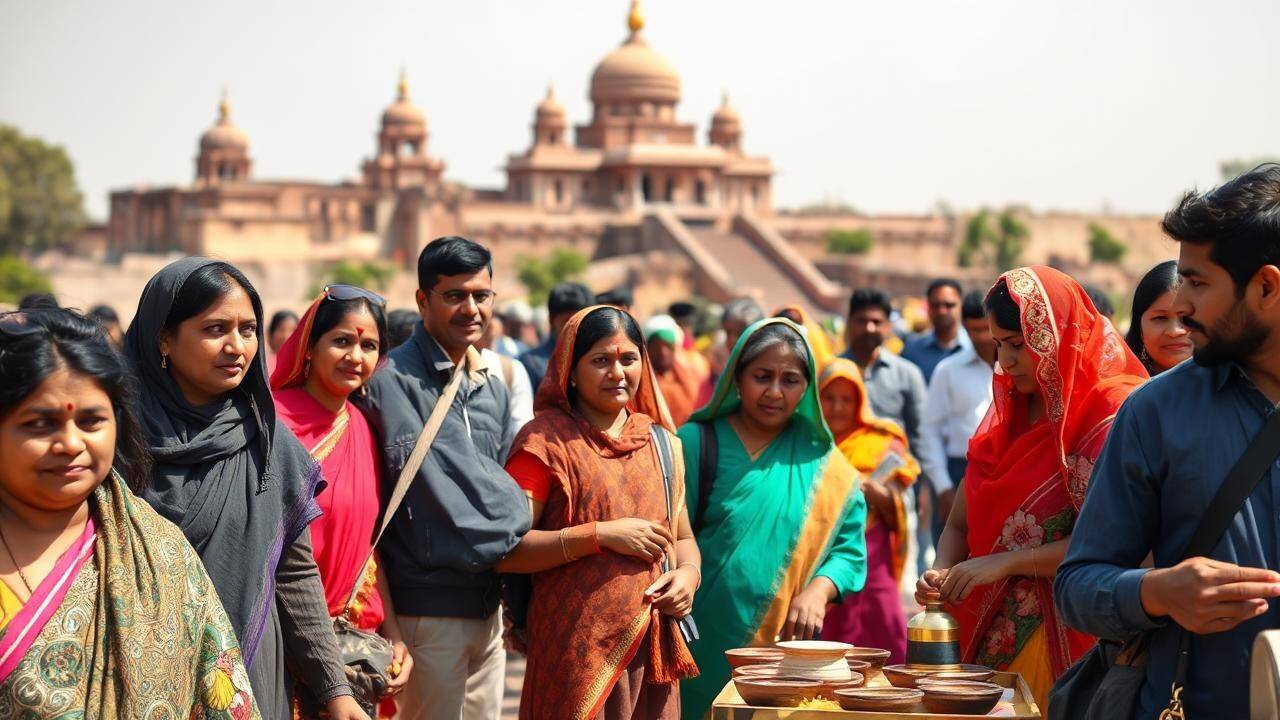The humble potato holds an unlikely economic lesson for Bihar. The “Potato Paradox” illustrates a startling truth: suppose you have 100kg of potatoes, which are 99% water by weight. You let them dehydrate until they’re 98% water. How much do they weigh now? The surprising answer is 50kg! The “paradox” exists because we focus on the small percentage drop in water. But by changing the water percentage from 99% to 98%, you’re effectively doubling the proportion of the dry potato stuff within the entire potato. For that fixed amount of dry stuff to double its proportion, the overall total weight has to shrink by half. That tiny 1% shift in composition triggers a massive transformation. In poor economies like Bihar, policymakers often overlook such counterintuitive dynamics: minor shifts in policy or infrastructure ratios in Bihar could halve barriers to tourism growth, and may unlock outsized gains in growth and welfare. As the axiom goes: no modern economy has truly flourished without being a strong tourism player, building the critical bridges upon which investment walks.
One of India’s oldest inhabited regions with a more than 3,000-year history, Bihar’s tourism potential is rooted in unique blend of ancient heritage, multi-religious significance, and cultural endowments. Bihar offers a rich tapestry of spiritual and historical significance, encompassing Bodh Gaya’s Mahabodhi Temple (where Buddha attained enlightenment), the ancient scholarly legacy at Nalanda and Vikramshila ruins, prominent Sikh sites (the birthplace of Guru Gobind Singh, featuring Takht Sri Harmandir Sahib and 12+ historic gurdwaras), key Jain pilgrimage centers like Pawapuri (Mahavira’s nirvana spot) and Kundalpur (Mahavira’s birthplace), notable Sufi shrines (Maner Sharif and Bihar Sharif showcase medieval Islamic architecture), and the Hindu Pitripaksh ritual of Pind Daan in Gaya Ji performed to offer homage and prayers to deceased ancestors, with the belief that it liberates their souls and ensures their peaceful journey to the afterlife. Moreover, it offers diverse experiential tourism, from culturally immersive Chhath Puja and the Sonepur Cattle Fair, to ecotourism adventures at Valmiki Tiger Reserve, Kakolat Falls, and the Kaimur Hills, complemented by unique handloom crafts and local cuisines.

Sites like Gaya Ji, with its Mahabodhi Temple—a UNESCO World Heritage site attracting over four million visitors in 2024—and the Pitripaksh rituals drawing more than half million pilgrims, demonstrate latent demand that remains underleveraged. Moreover, recent figures from April 2024 till May 2025, suggest Bihar welcomed around 75 million tourists, with just less than a million foreign tourists, signaling substantial interest if the experience can be improved. Tourism’s labor intensity offers broad employment for semi-skilled and under-skilled workers. The state’s revised Tourism Policy (2025) lowers hotel investment thresholds from ₹10 crore to ₹5 crore and includes incentives for inclusive hiring, potentially catalyzing hospitality growth and jobs in construction, services, transport, and local handicrafts. Industrial corridors and manufacturing clusters around pilgrimage hubs further indicate synergies between tourism and broader economic activity, suggesting that strategic investment could reverberate through supply chains and value-added sectors.
Yet infrastructure bottlenecks dampen Bihar’s promise. Public transportation is still patchy: although 166 new deluxe buses (20 reserved for women) were flagged off recently in Patna and other districts, intra- and inter-district connectivity to key sites often remains inconvenient. Hotel shortages—especially at varied budget tiers—limit accommodation choices. Basic amenities like clean public toilets, rest areas, and information centers are inadequate. Health facilities in tourist locales lag behind, raising safety concerns. Addressing these gaps need not be revolutionary: targeted upgrades in transport links, lodging, and services could substantially raise the effective value of Bihar’s attractions.
The fragility of tourism-driven economies means that reputational shocks reverberate widely. Studies identify poor infrastructure, limited connectivity, and scant media coverage as prominent constraints in Bihar’s tourism sector. The occurrence of even one adverse incident—for example, a healthcare emergency, a sanitation lapse, or the recent murder of a prominent businessman in Patna—is enough to deter many prospective visitors, negatively impacting local businesses and employment. Conversely, consistent small improvements—better roads, reliable signage, cleaner facilities—can reinforce a virtuous cycle of higher satisfaction, word-of-mouth promotion, and reinvestment.
Media attention and digital outreach remain underutilized. Though government plans have included social media campaigns and influencer engagement to build “Brand Bihar,” implementation is uneven and fragmented. A cohesive online presence—user-friendly websites in multiple languages, interactive itineraries, virtual tours, and responsive social channels—can broaden reach at relatively low cost. Coupling this with local storytelling—highlighting untold histories, community experiences, and niche attractions—can differentiate Bihar in a crowded tourism market.
Ultimately, Bihar’s tourism story need not wait for gigantic capital infusions alone; it calls for smart sequencing and prioritization of investments—akin to adjusting the “composition” of inputs to maximize yield. By focusing on targeted upgrades in transport, lodging diversity, basic hygiene and sanitation, healthcare readiness, and digital marketing, the state can trigger outsized gains in visitor satisfaction, employment, and broader economic linkages. The potential is staggering; it’s time for the transformation.
Disclaimer
Views expressed above are the author's own.







Top Comment
{{A_D_N}}
{{C_D}}
{{{short}}} {{#more}} {{{long}}}... Read More {{/more}}
{{/totalcount}} {{^totalcount}}Start a Conversation